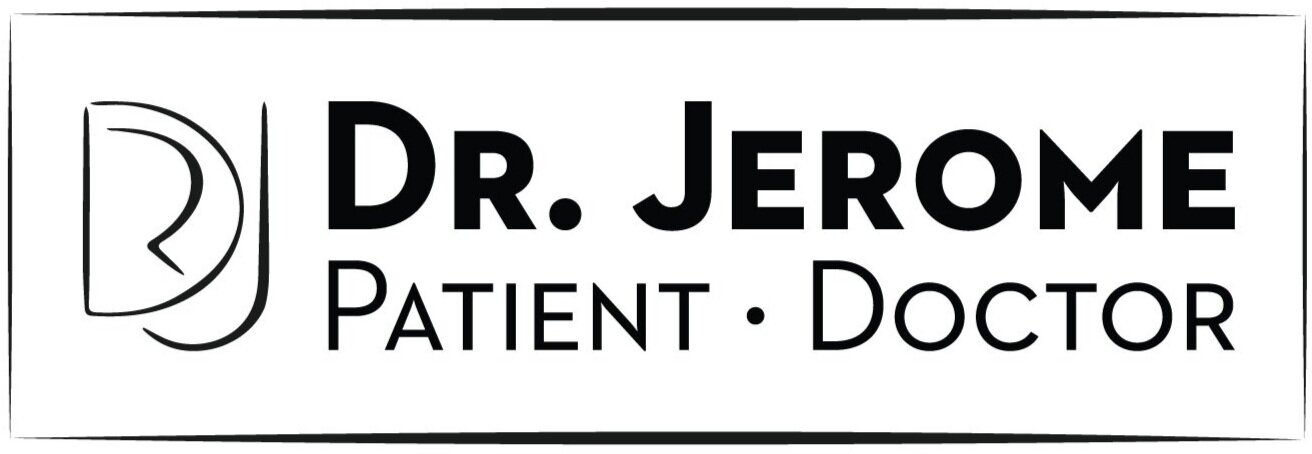FAQs
-
I became a doctor, primarily, because I couldn't find a good one.
Living a personal journey marked by profound migraines, immigration difficulty and challenging life experiences, I navigated a healthcare system that left me wanting.
I found both clinical and spiritual communities lacking in depth and support. My encounters led me to realize the need for better healthcare providers.
Frustrated by my own search for a doctor to support my unique diagnosis, I transitioned from a background in digital animation, film and music to pursue a career in medicine. My unconventional background set me apart from traditional healthcare providers, and I wanted that reflected in the kind of practice I created.
My decision to become a doctor was rooted in the belief that genuine connections and understanding are often overlooked in both personal and professional relationships. Recognizing the depth within individuals and their unique battles, I saw an opportunity to contribute meaningfully to the lives of others through healthcare. Offering tangible support to others in ways I ultimately desired for myself.
-
Functional Neurology is similar to a personalized brain training program, combining elements of chiropractic care, traditional neurology, occupational therapy (OT), physical therapy (PT), and neuropsychology. The focus is on rehabilitating individuals without resorting to medication or surgery by specifically targeting different parts of the brain. It is rooted in the truth of neuroplasticity, the brain can change.
The primary goal is to tune and optimize brain function by engaging with the body's sensory systems, particularly the vestibular system responsible for balance. Like a luthier fine-tunes musical instruments, a Functional Neurologist identifies areas of the brain that are "out of tune" and applies targeted interventions to rehab them. In it's approach, it is much like being a personal trainer for the brain, helping individuals assess their cognitive strengths and weaknesses to improve overall function. The approach emphasizes non-invasive methods to enhance brain health and performance.
-
I was introduced to the Enneagram through a persistent friend who urged me to explore its potential connection to neuroscience, given my background and current pursuit of a degree at that time. After a year of being encouraged, I finally delved into an audiobook, leading to a transformative experience that aligned the Enneagram's symbolism with basic brain function—which lead to a profound experience of seeing the brain and the Enneagram symbology intuitively connect and relate.
This experience prompted a seven-year journey to substantiate the idea that the Enneagram, when used wholistically and comprehensively, mirrors basic brain function. Throughout this time, I've been committed to proving that the Enneagram is intricately connected to fundamental brain processes. This exploration has shaped my approach, affirming the Enneagram's relevance in clinical practice for enhancing overall health, both personally and professionally.
The connection between the Enneagram, spirituality, and neurology lies in understanding how the human brain develops through processing and reconciling pain-based experiences. The frontal lobe, acting as the executive decision-maker, plays a vital role in fostering self-awareness. The Enneagram, with its nine numbers, provides a language to discuss the diverse aspects of one's identity, while neuroscience links this system to the internal operating system—the brain.
In summary, my introduction to the Enneagram stemmed from a desire to blend neuroscience with this personality system. Through research and clinical practice, I found it to be a valuable tool for wholistic health, emphasizing the interconnectedness of identity, spirituality, and neurological processes.
-
The Whole Identity Profile methodology, in contrast to traditional Enneagram models that tend to simplify and pigeonhole individuals, emphasizes a wholistic understanding of human functioning.
It overlays the Enneagram symbol with basic brain anatomy, emphasizing that we are not just one part of the brain but integrated beings.
We are not left-brained or right-brained. This approach encourages exploring all Enneagram numbers as they relate to our individual experience to understand what our brain pursues and avoids for a sense of safety, especially the lowest numbers, and why that matters.
In this model our highest numbers represent what we pursuing, and our lowest numbers represent what we are avoiding. The goal is to move beyond a singular identity and embrace the complexity of being a whole human, integrating neuroscience and psychology.
-
Express what you are experiencing.
Vulnerability about what’s causing stress often accelerates your capacity for feeling safe.
A self-aware statement like, “I feel afraid right now because _____” is a healthy way of expressing what you are feeling without accepting your feelings as objective truth.
As you clarify and declare your experience, your brain can reframe the situation in a healthier context because you’ve identified exactly what it is that’s causing you to respond with stress.
This strategy takes intentional practice, but it’s extremely effective in moving you from feeling afraid to feeling safe.
Think of a situation causing stress in your life. Identify the feelings you’re experiencing and ask yourself why you’re feeling that way.
*Pro-tip: If you haven’t gotten to the bottom of things yet, keep asking why.
For example, “I feel afraid because I don’t trust him” can be chiseled down even further. Why?
“...because he talks so much in meetings I get confused and overwhelmed.” Why?
“...because I need clarity in order to feel secure and he makes everything cloudy.”
Eventually, you strike gold. “I feel afraid when I don’t have clarity.”
See how you can eliminate or reduce stress in your life simply by seeking to understand the root of it and responding with awareness.
